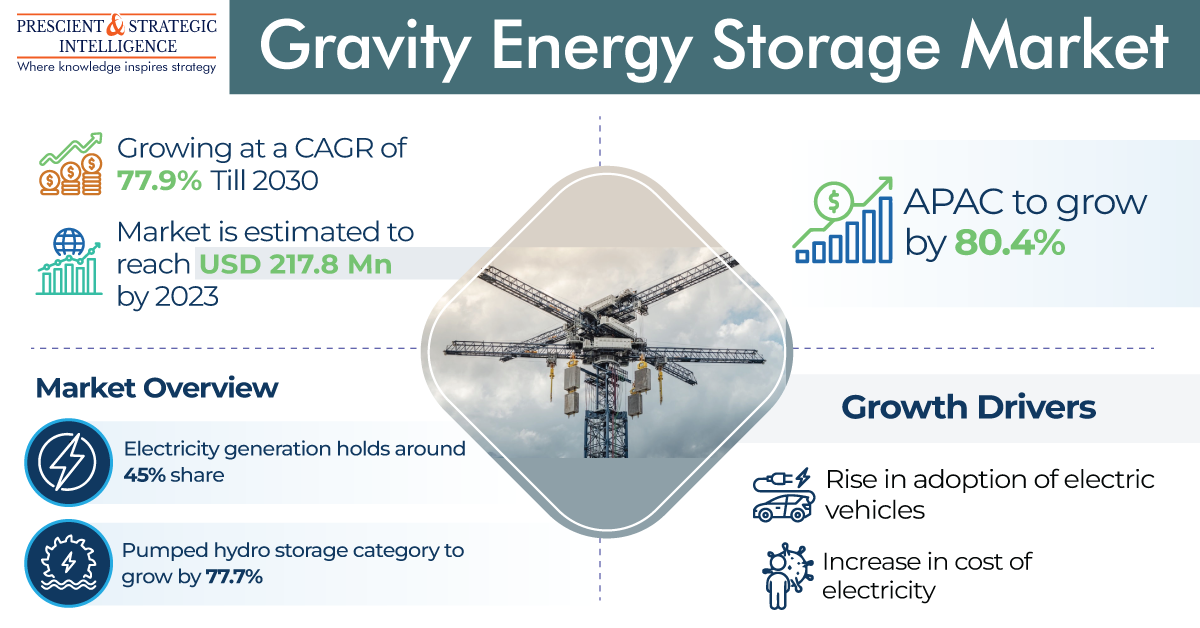Gravity Energy Storage is Important, and here is Why?

As the renewable energy field continues to develop, innovations are sought after to cope with the episodic nature of several green power sources.
It is an example of gravity energy storage (GES) technology using the force of gravity to store as well as release energy. This innovative concept provides a stable, cost-effective way of saving renewable energy for use in the future.
What is Gravity Energy Storage?
Gravity energy storage works in a straightforward but exceptional principle - lifting heavy materials to store potential energy and letting them drop back for power conversion.
One of the primary methods used is based on large masses, such as huge concrete blocks or heavy containers filled with materials like gravel. They are lifted to high altitudes when surplus power is available, and if energy has to be stored, they drop; this makes turbines turn which produces electricity.
Benefits of Gravity Energy Storage
Reliability & Durability
Reliability and durability are the uniqueness of GES systems. In contrast to a few other energy storage technologies, GES does not have performance degradation over time. Since the system is mechanical in nature, it has a long life span and requires little maintenance.
Scalability
Gravity energy storage is very scalable and can be used in many different settings such as small-scale community projects or large utility installations. This scalability is useful for applying the technology to various energy storage requirements and grid sizes.
Eco-Friendly
GES is eco-friendly because it does not use toxic chemicals or materials. In natural environments or landscapes, the systems can be put together without having severe ecological issues. The GES system is relatively low in lifelong environmental footprint as compared to other storage options.
Cost-Effectiveness
The gravity energy storage systems are cost-effective due to the simplicity factor. Simple materials and concepts in construction can be cheaper than high-technology buildups because of the simplicity.
What Will Be the Future of Gravity Energy Storage?
GES is unlocking new horizons with continuous technological developments. However, the most effective integration of smart grid technologies with GES provides an ideal combination for synergizing both efficiency and responsiveness in terms of energy consumption.
At the same time, research is helping to improve materials and methods of engineering for more cost-effective GES systems. Advancements in materials science and precision engineering create strong installations able to withstand cyclic loading.
Secondly, intensified interest in environmental sustainability boosts research drive to reduce the negative impact that GES has on nature. This comprehensive approach means a critical examination of all aspects of GES projects – from the place selection to decommissioning, holding an appropriate balance between increasing energy storage capacity, and decreasing ecological footprint.
With the advancement in GES, these technological wonders highlight its potential to change energy storage and influence a greener as well as stronger energy landscape.
Wrapping Up
With the surging acceptance of EVs and the rising electricity price, the demand for gravity energy storage will reach a value of USD 12,231.5 million in 2030.
- Art
- Causes
- Crafts
- Dance
- Drinks
- Film
- Fitness
- Food
- Παιχνίδια
- Gardening
- Health
- Κεντρική Σελίδα
- Literature
- Music
- Networking
- άλλο
- Party
- Religion
- Shopping
- Sports
- Theater
- Wellness


